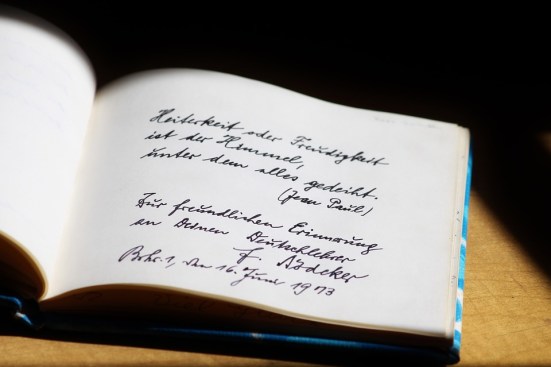主な違い – 散文と韻文
散文と詩は、どちらも文学において重要な役割を担っています。
その違いは、言語の構造にあります。
散文と詩の主な違いは、散文が自然に書かれるのに対し、詩は計量構造で書かれることです。
散文は本来の自然な形の言語を指し、詩は詩で使用される言語を指します。
散文とは
散文という言葉は、ラテン語の「prosa oratio」に由来し、まっすぐな、直接的な話し方という意味です。
現代では、散文とは普通の話し言葉や書き言葉と定義される。
散文には文法的な構造と自然な話し方の流れがあり、比ゆ的な構造もない。
そのシンプルさと芸術性の高さから、話し言葉の大半に使われ、フィクションでも事実の文章でも使われる。
新聞、雑誌、映画、小説など、さまざまなメディアで一般的に使用されている。
小説、小説、短編小説は散文の3大文芸作品に分類される。
The main difference between prose and verse is that prose lacks the rhythmical structure of verse. The prose is composed of full grammatical sentences, and these sentences are grouped into paragraphs. The language of prose, especially the language used in nonfiction prose, is devoid of many decorations, and the ideas are straightforward.
Verseとは
ヴァースとは、韻を踏んだリズムで構成された言語のことです。
ヴァースを作るためには、計量的な音節と文のリズムが考慮されます。
韻とリズムはヴァースにおいて重要な概念です。
しかし、散文ほど自然で自由な文章ではありません。
verse は通常、芸術的な方法で何かを表現するために使われます。
詩はverseの最も良い例です。
実際、poetryとverseは同義語と考えられている。
The language used in verse tends to be more decorative and creative than the language used in prose. More attention is paid to sound and rhythm. In verse, the ideas are written in lines; a line can be very long or as short as one word. Several lines make up of a stanza. Poems can be categorized into different types depending on the structure of the stanzas. Blank verse, free verse, cinquain, etc. are some examples of these structures. It is also important to note that the poets use a limited number of words to express their ideas in verse.
散文と韻文の違い
定義
散文とは、通常の形式の話し言葉または書き言葉で、計量的な構造を持たないものです。
韻を踏んでいるのが一般的です。
ライム・アンド・リズム
散文は韻とリズムに注意を払わない。
詩は韻とリズムに注意を払います。
これらは詩の本質的な構成要素です。
構造
散文では、アイデアは文に書かれ、文は段落にまとめられる。
Verseでは、アイデアは行で書かれ、行はスタンザにグループ化されます。
言語
散文は、より自然で文法的な言葉で書かれている。
保存方法
